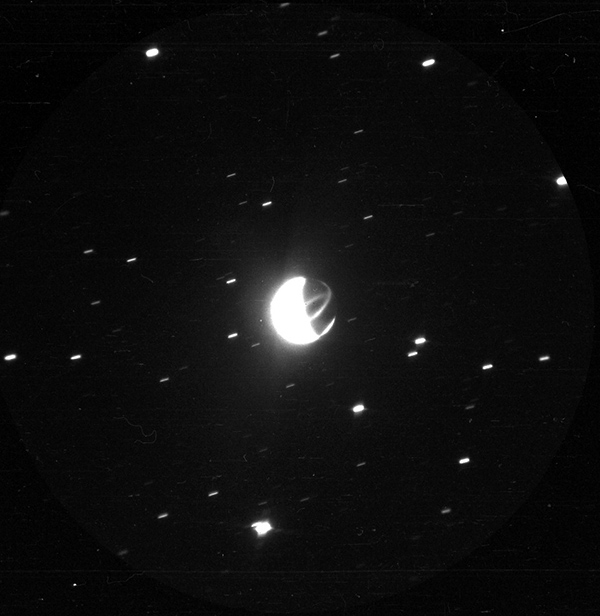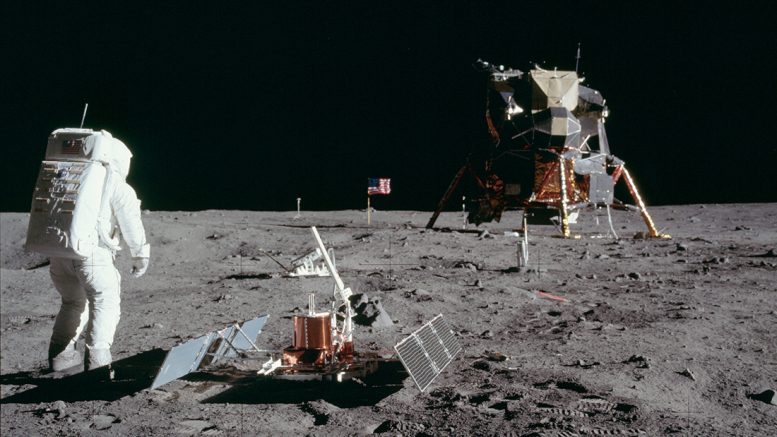50 years ago, for the first time, man stepped into lunar regolith. This was the result of the fantastic progress of science and technology, the space race, the political confrontation of two countries: the USA and the USSR. A man’s flight to the moon has become such an incredible event that today many people deny the very fact of such a flight. Fortunately, thanks to the Internet, we have access to a huge amount of materials and scientific data that make it possible to independently find out the details of this complex program.
Landing places for lunar modules, automatic interplanetary stations, lunar rovers taken by the Lunar Reconnaissance Orbiter satellite: lroc.sese.asu.edu
Landing sites of Apollo 15 and Apollo 17 in the shooting of the Japanese spacecraft Kaguya, 3D reconstruction of landscapes taken by astronauts: kaguya.jaxa.jp
Apollo 15 landing site in the filming of the Indian spacecraft Chandrayaan-1
currentscience.ac.in
Description of the Surveyor program with links to received photos of successful spacecraft of the series: lpi.usra.edu/lunar/missions/surveyor
Pictures of the Lunar Orbiter program that selected the landing site for Apollo: lpi.usra.edu/resources/lunarorbiter
Image archive of the Chinese lander Chang’e 3 and the Yutu lunar rover: planetary.org/blogs/emily-lakdawalla/2016/01281656-fun-with-a-new-data-set-change
Of course, the Soviet and Chinese lunar rovers did not see the traces of Apollo, as they sat in other places, but they allow you to look at the Moon with “different eyes,” and compare it with American shots.
Project Apollo – archive of 15 thousand images delivered by astronauts of the Apollo program: flickr.com/photos/projectapolloarchive
Archive of images of orbital panoramic and cartographic cameras that were installed on Apollo 15-16-17: wms.lroc.asu.edu (some of the links no longer work, but orbital images are available).
Images of stars and the Earth taken by the Apollo 16 ultraviolet telescope (Far Ultraviolet Camera / Spectroscope) from the moon’s surface (converted to modern image formats by amateurs from the NASA source files sent): archive.org/details/AS16-123

Scanned image catalog Far Ultraviolet Camera / Spectroscope: babel.hathitrust.org
Apollo lunar surface journal – a large archive of materials, photo-audio-film-full text of the negotiations during the mission. Apollo Landing Research Monographs: history.nasa.gov/alsj
Lunar Sample Laboratory – the place where the lunar soil is stored in Houston: curator.jsc.nasa.gov/lunar
PDF catalog of lunar soil samples with color photographs, microsections, mineralogical composition: curator.jsc.nasa.gov/lunar/catalogs
Saturn-5 rocket manual: history.nasa.gov/afj/ap08fj/pdf/sa503-flightmanual
Description and Design of the Apollo Command Module: hq.nasa.gov/alsj/CSM06_Command_Module
Description and construction of the Apollo Lunar Module: hq.nasa.gov/alsj/LM04_Lunar_Module
Apollo astronaut measurement data on radiation and cumulative radiation dose: hq.nasa.gov/alsj/tnD7080RadProtect
Description of the technology for landing a command module on Earth using Apollo 4 as an example: ntrs.nasa.gov/archive
Apollo toilet: history.nasa.gov/SP-368
The list of all sources, of course, is not limited to the above. Studying all the materials makes it possible to understand the enormous amount of work performed by people who decided to get to the moon.
I would like to draw attention to the efforts to publish the entire volume of historical materials: NASA, educational institutions, and amateur enthusiasts participate in this work. We can only dream of this, because a huge amount of materials from Soviet research programs is gathering dust in archives, inaccessible to Internet users. For example, panoramas of Lunokhods are published, but tens of thousands of television shots are not. A collection of images of the Moon from the Soviet “Probe-8” can only be seen on the website of the US Geological Survey , and this is not the only example when American enthusiasts and public services popularize Soviet space achievements more readily than ours.
I use materials on Apollo and other programs in my work on my book on the Apollo program and the popular questions that many people have on the Internet. I think this collection of links will be interesting to many. If you know any other useful official or unofficial resources on the Lunar program – share in the comments.

